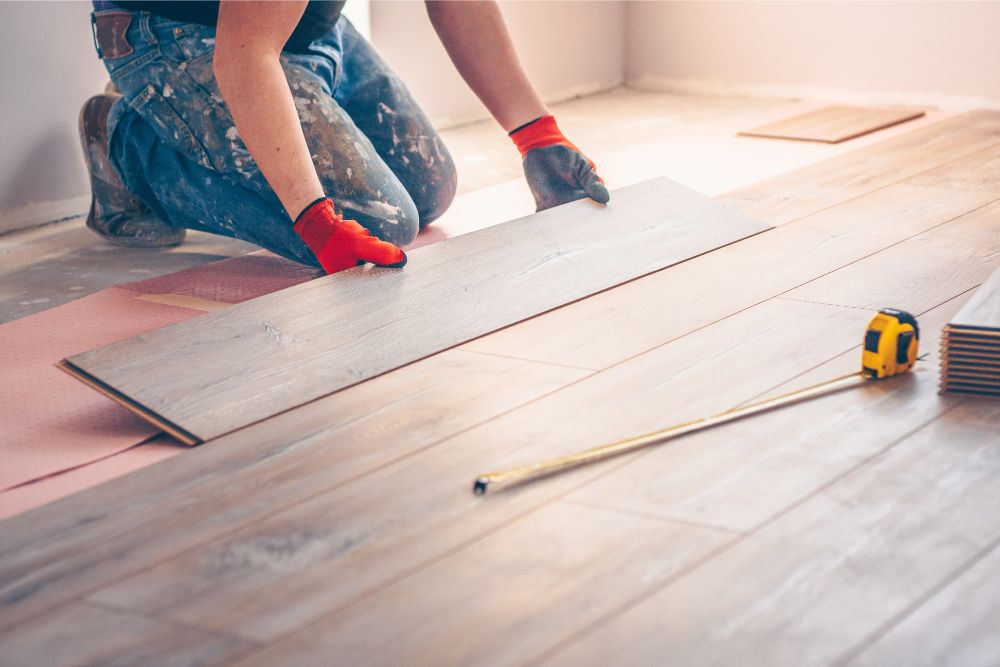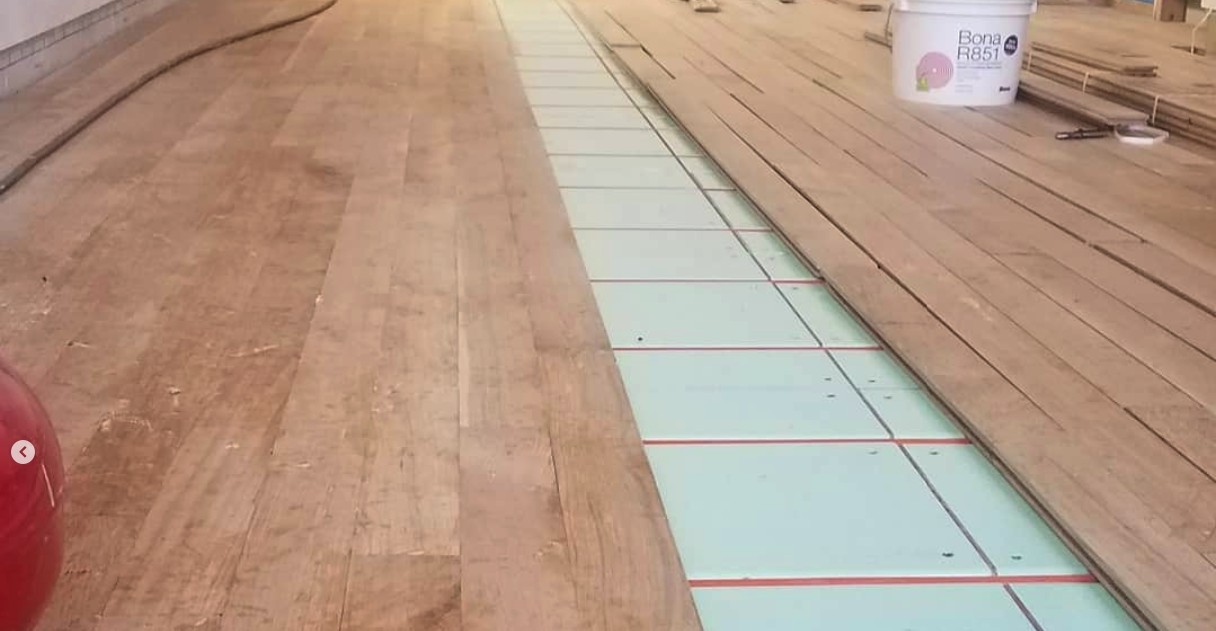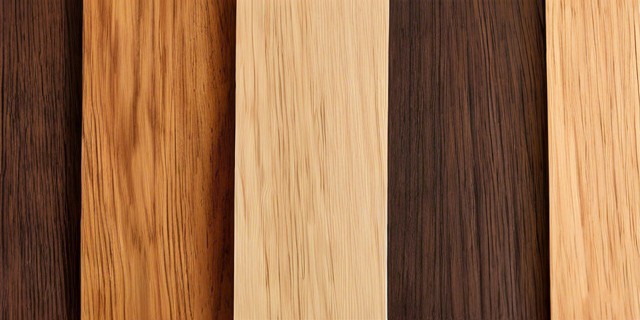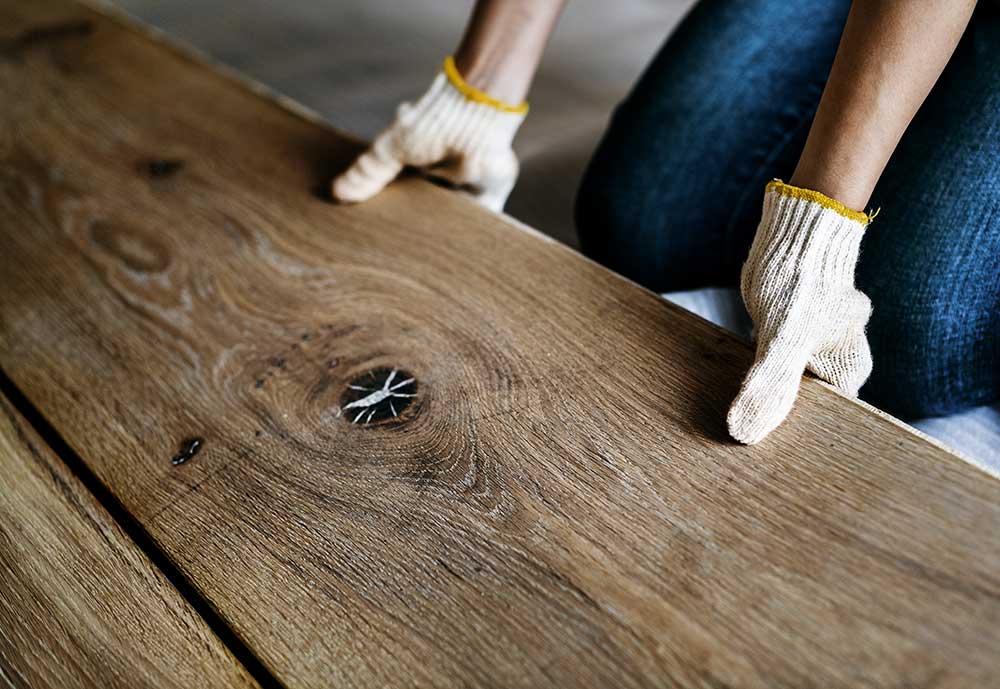
Wood flooring is recognized for its beauty and durability. When one installs Engineered Wood Flooring, it is important to ALWAYS follow the manufacturer’s installation recommendations. The next thing you need to note is that not all wood flooring installation methods are recommended for all types of wood floors.
If you are planning to install solid hard wood flooring or engineered hard wood flooring, consult with an NWFA Certified flooring professional. Alternatively, you may visit the National Wood Flooring Association to find educational resources and certified flooring professionals at www.woodfloors.org.
At a Glance: The Four Main Wood Flooring Installation Methods
The four key Engineered Wood Flooring installation methods we will review in this post are:
- Click lock floating
- Glue together floating
- Glue down
- Nail/staple
Now, which installation method is considered the best of its kind?
In most cases, the answer is dependent upon the TYPE of wood flooring and the conditions of your sub floor. Sub floor refers to the structural support for your flooring. Plywood, OSB, particleboard, or concrete can all be subfloors.
Introducing the Glueless Click Lock Floating Method
For this method, the flooring you choose must have a click together locking system. With the click-system, the planks interlock together by hand (without nails or adhesives). So, this type of flooring system can stay in place without nails or adhesives. It uses the weight and tension created by the click system to stay secure.
Having the appropriate underlay underneath is essential. Underlay serves as a sound absorbing layer. The glueless, click-lock float can be installed over any smooth, stable surface. This makes installing over any existing flooring like vinyl, tile, plywood, or hardwood, easy. More importantly, the floor must be completely level to avoid any issue caused from the lack of adhesive directly to the subfloor.
Introducing the Glue Together Floating Method
The glue together method is similar to the process of the glueless click-lock float in that it does not use nails or adhesives directly on the subfloor. The difference is that instead of a click-together locking system, it uses a traditional tongue and groove system (without a lock) that is reinforced with specific tongue and groove glue.
While the adhesive is applied in the tongue and groove sets, the floors will need to dry and rest for at least 12 hours. Consequently, you cannot have any activity, including moving any furniture on top of the surface. This method is very popular for engineered hardwood floors. The majority of Eko Flooring & Woodwork Custom Collection will be tongue and groove. With a sound absorbing underlay, they can be installed over any smooth and stable surface. Again, it is important that the glue together floating method be utilized over a completely flat surface.
Introducing the Glue-Down Method
In this method, the wood is adhered directly to the subfloor by applying a full spread of adhesive. A hand trowel is used to apply the glue with a specific full spread application technique. The adhesive we recommend is the BONA R851. This specific product has exceptional green gran strength, is easy to apply, is easy to clean, has zero VOC’s, GREENGUARD Certified for indoor air quality, and can be installed over radiant heat systems. BONA is environmentally friendly and does not emit harmful fumes or chemicals that could be dangerous to your health like other glues.
Removing old glue could be one of the many things required to prepare your subfloor prior to using this the glue down method. Old glue residue can react with new glue and create a chemical reaction that compromises the adhesive properties of the new glue. The glue down method is very popular for installing engineered hardwood flooring.
Introducing the Nail or Staple Down Method
The nail or staple down method is exactly as it sounds: special nails or staples are employed to fasten solid or engineered hardwood to the subfloor. Very specific sized nails and staples are dependent on the thickness of the wood floor and type of subfloor. This varies by project and depends on recommendation of manufacturer or wood flooring professional.
We recommend installing an underlay. It is an efficient sound barrier, a vapor barrier and eliminates squeaks and creaks that can naturally develop with the expansion and contraction of the wood. That said, solid wood typically exhibits more dramatic expansion and contraction compared to engineered. Engineered wood flooring has many layers that contribute to its stability. The nail/staple down method can only be used over a wood subfloor (preferably plywood), as nails and staples will not easily be accepted by concrete or other materials.
Sounds Tricky? It is!
Choosing the correct wood flooring installation method for your engineered wood flooring is imperative. It will contribute greatly to the success or failure of your floor. Using an improper installation method can result in costly problems. Cupping, buckling, warping and delamination of flooring to name a few issues – trust us, it is not fun!
A failing floor can be upsetting, especially as it can usually be prevented. It is COSTLY and takes a lot of time to correct.
What Should You Do?
Bring in an Expert. A REAL ONE!
We like to say that “cheaper does not always mean, less expensive”. Frequently we speak to clients who initially hired a “contractor” based on price, rather than their training and certifications. Later they have issues that need to be repaired. Often this costs much more than any perceived savings from a low price quote. It is important to understand that not all contractors obtain the appropriate training and education needed to install flooring. This field requires knowledge, training and experience as a craft, science and service.
At Eko Flooring & Woodwork, we offer Consultative Services through Tomasz Poznanski, our Certified NWFA Flooring Inspector.
After your engineered wood flooring purchase, we can test the moisture of the wood flooring system and subfloor on site. We advise and assure on proper acclimation of the new wood flooring for the installation environment. We will then consult with your general contractor or installer regarding the ideal installation method and proper subfloor preparation.
Take Away Message…
Do yourself a favor and consult with an experienced inspector before you install any type of wood flooring. It will save you a lot of time and money.Ask a friend who has a failing floor, they wish they could have thought about the aforementioned sooner!



